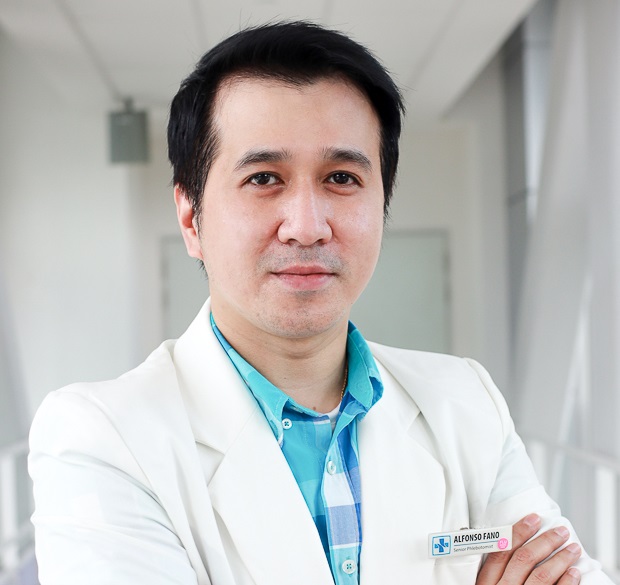“Many patients
have jokingly
called us
(phlebotomists)
‘Dracula’ or vampire because
we draw blood,” said Mr Alfonso
Fano. As a Senior Phlebotomist
in Changi General Hospital (CGH),
needles and test tubes are the
tools of his trade to draw and
store blood from patients to
diagnose medical conditions.
When he joined CGH in 2013,
Mr Fano was part of a team of
just five phlebotomists. Today,
the team has expanded to 18.
He trained as a medical
technologist in his hometown
in the Philippines for five years,
where phlebotomy was part of
the curriculum. In Singapore, he
further underwent a phlebotomy
course for several months.
“Phlebotomy is not a term
that many people are familiar
with. Many elderly patients, in
particular, have never heard of
such a job,” he said.
While nurses can also draw
blood from patients, they have
to take on other tasks such as
attending to patients in the wards, whereas phlebotomists are Allied
Health Professionals who focus on
the drawing of blood alone.
Apart from technical
knowledge on the structure of
blood veins, Mr Fano feels that
there is an art to blood extraction.
Passion, good communication
skills, and a sense of humour
are attributes that make one a
good phlebotomist.
“When you do your work with
passion, many challenges can be
overcome,” he said, adding that
he would always greet and attend
to his patients with a smile.
“When you have a sense of
humour, patients are more at ease
during the blood-drawing process.
No one likes being pricked with
a needle, but we aim to ensure
that patients experience as little
discomfort as possible, especially
for those who have a fear of
needles,” said Mr Fano.
He finds it most gratifying
whenever his patients give
feedback that the process was
almost painless, knowing he has
done a good job.
He sees between 40 to 60
patients a day, and has attended
to those as young as a newborn
to a 98-year-old woman. For
each patient, he searches for “a
good vein”, ideally in the middle
of the arm, to help ensure success
in extracting the blood. This is
achieved more effectively through
feeling for the vein, rather than
by sight.
Protocols including hand
hygiene and asking a patient for
two identifiers (such as their name
and identity card number) are
strictly adhered to.

Stepping up in crisis
During the COVID-19 pandemic,
Mr Fano’s training and experience
as a medical technologist came
in handy when he volunteered
to handle the delicate task of
processing samples for polymerase
chain reaction (PCR) testing.
His laboratory stint lasted four
months before he resumed his role
as a phlebotomist.
Due to the travel restrictions,
Mr Fano has been unable to return
to the Philippines to visit his wife
and young daughter. Nonetheless,
he is thankful that modern
technology has allowed him to
stay in touch with them daily
through voice and video calls.
To maintain a healthy lifestyle,
he takes part in physical activities,
such as running, badminton and
table tennis. During the “circuit
breaker” period, he also spent
time honing his culinary skills, and
particularly enjoys whipping up
pasta and rice dishes.
